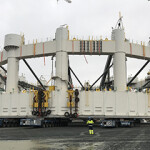US CBP takes action against Taiwanese trawler, accusing it of using forced labor

U.S. Customs and Border Protection (CBP) has issued a withhold release order against a Taiwanese tuna trawler, saying it has received credible information that the vessel was involved in the use of forced labor.
The agency, a division of the U.S. Department of Homeland Security, on 31 December ordered its personnel at all U.S. ports of entry to detain tuna and other seafood harvested by the Lien Yi Hsing No. 12, a Taiwanese-flagged and -owned distant-water fishing vessel. The agency said its investigation concluded the Lie Yi Hsing 12’s operators had used deceptive hiring practices, withholding of wages, and debt bondage in staffing the vessel. In a press release, the CBP said it will provide the owner of the vessels the opportunity to demonstrate its merchandise was not produced with forced labor, or to export any of their shipments that have been detained to a third country.
“Americans need to know that tuna and other seafood products can be at high risk of being harvested by forced labor, which is a form of modern-day slavery,” CBP Acting Commissioner Mark A. Morgan said. “CBP is working hard every day to keep illicit goods off store shelves, but we need American shoppers to do their part. You can help end forced labor by learning where your favorite products come from and by buying only from reputable retailers.”
According to the Western and Central Pacific Fisheries Commission, the Lien Yi Hsing 12 is owned by Maung-Jian Chai of Pingtung County, Taiwan. The ship’s master is Ho-Hsin Tsai.
The CBP action was triggered in part by the Greenpeace Southeast Asia report “Seabound: The Journey to Modern Slavery on the High Seas,” according to the environmental NGO. The Lien Yi Hsing was cited in the report, along with the Taiwanese fishing vessel Da Wang, which received a WRO from the CBP in August 2020 “due to reasonable suspicion of forced labor on the vessel,” according to the agency.
In September 2020, the U.S. Department of Labor added Taiwan to the countries named in its 2020 List of Goods Produced by Child Labor or Forced Labor. The move came after 19 NGOs and businesses urged the DOL to include the nation on its list after discoveries of forced labor on fishing vessels in Southeast Asia.
“Taiwan’s current regulation for migrant fishers working on Taiwan’s distant-water fishing vessels subjects them to lower labor standards and weaker protections than Taiwanese fishers,” Greenpeace East Asia Ocean Campaigner Pearl Chen said. “We demand the Taiwan government stop discriminating against migrant fishers and ensure they enjoy the same labor protections as Taiwanese fishers. The Taiwan government must also ensure the migrant fishers are governed by the Ministry of Labor to effectively protect their rights and prevent Taiwan from losing the U.S. as an important seafood market.”
The move against the Lien Yi Hsing 12 comes on the heels of a study published in late December in Proceedings of the National Academy of Sciences that found satellite imagery can be used to detect illegal labor practices on board distant-water fishing vessels.
The study, “Satellites can reveal global extent of forced labor in the world’s fishing fleet,” was led by Gavin McDonald, a project researcher with the University of California, Santa Barbara’s Environmental Markets Solutions Lab. It investigated the movements of more than 16,000 vessels between 2012 and 2018, finding that vessels known to have crew that are subject to forced labor “behave in systematically different ways to the rest of the global fishing fleet,” according to McDonald.
“For several years now, international media has shone a spotlight on forced labor in the world’s fishing fleet, but its extent has been largely unknown,” McDonald said. “By combining satellite data, machine learning, and on-the-ground expertise from human rights practitioners, we have identified vessels with a high risk of engaging in human rights abuses. Our findings can be used to unleash new policy and market actions that have not previously been possible.”
The study found that up to 26 percent of the world’s distant-water fleet showed signs of employing forced labor, identifying approximately 4,200 vessels not previously publicly deemed to be at-risk vessels. The study’s authors estimated as many as 100,000 fishermen are potentially subjected to forced labor onboard distant-water fishing vessels globally.
The researchers used their findings on the 27 unique behaviors and characteristics of vessels known to engage in forced labor to build a model to identify and predict vessels at high risk of engaging in similar abuses. The study found the primary indicators of high-risk vessels included travel farther from home ports, higher engine power, fishing longer hours each day, longer time spent fishing in unregulated areas of the high seas, and completing fewer total fishing voyages on a per annum basis. The model correctly predicted forced labor in more than 90 percent of reported high-risk activity, according to McDonald.
Global Fishing Watch, Environmental Market Solutions Lab, and Liberty Shared assisted in the team’s research efforts. In a press release, Global Fishing Watch said it will partner with the University of California, Santa Barbara to “further develop this model to provide governments, enforcement bodies, and international agencies with a robust tool that can be used to assess risk of forced labor on vessels and support targeted inspections through relevant policy mechanisms.”
Global Fishing Watch said the model may also be made available to the seafood sector to encourage its use in supply chain risk assessments.
Photo courtesy of Western and Central Pacific Fisheries Commission






Share